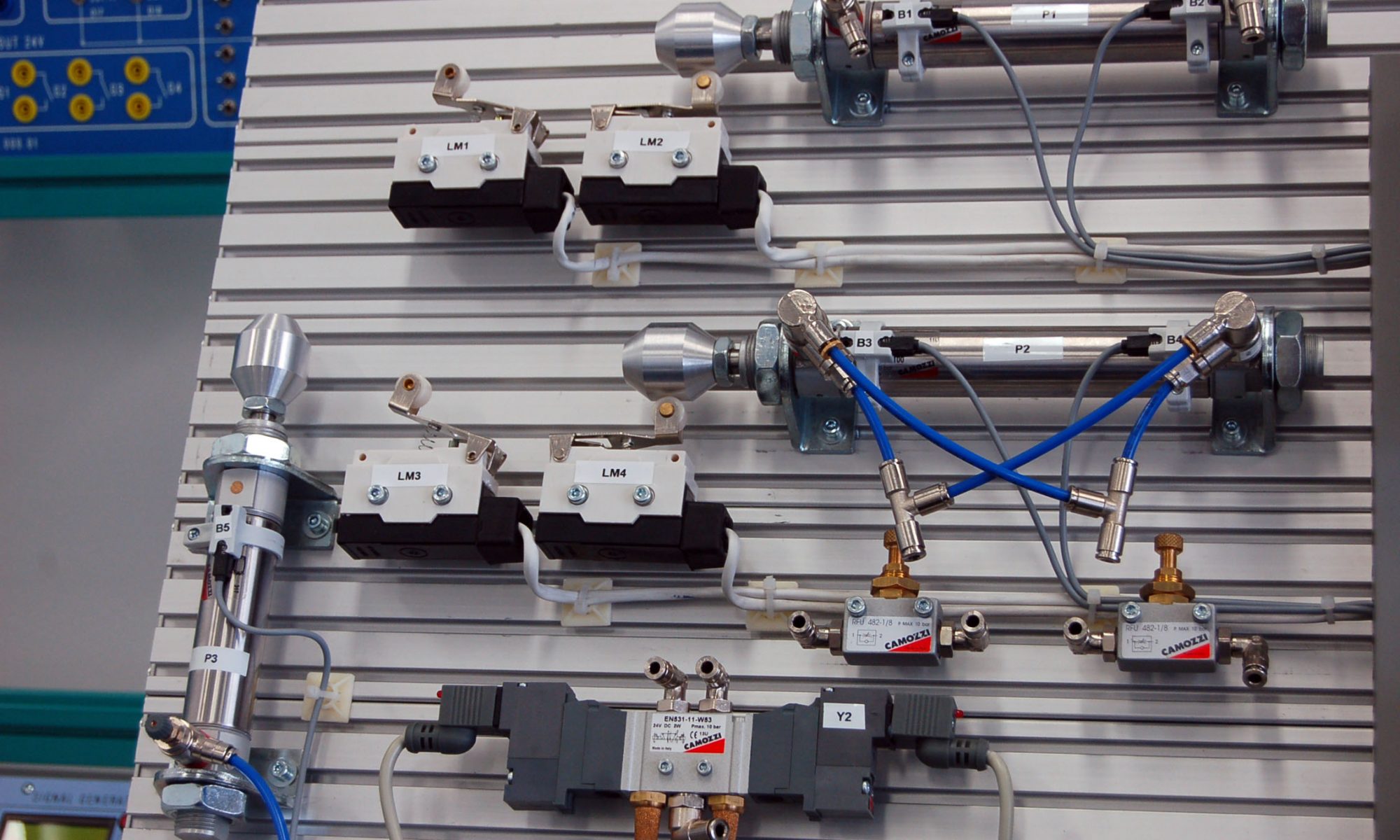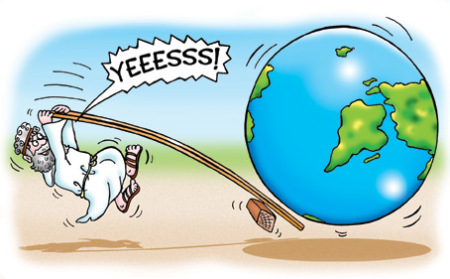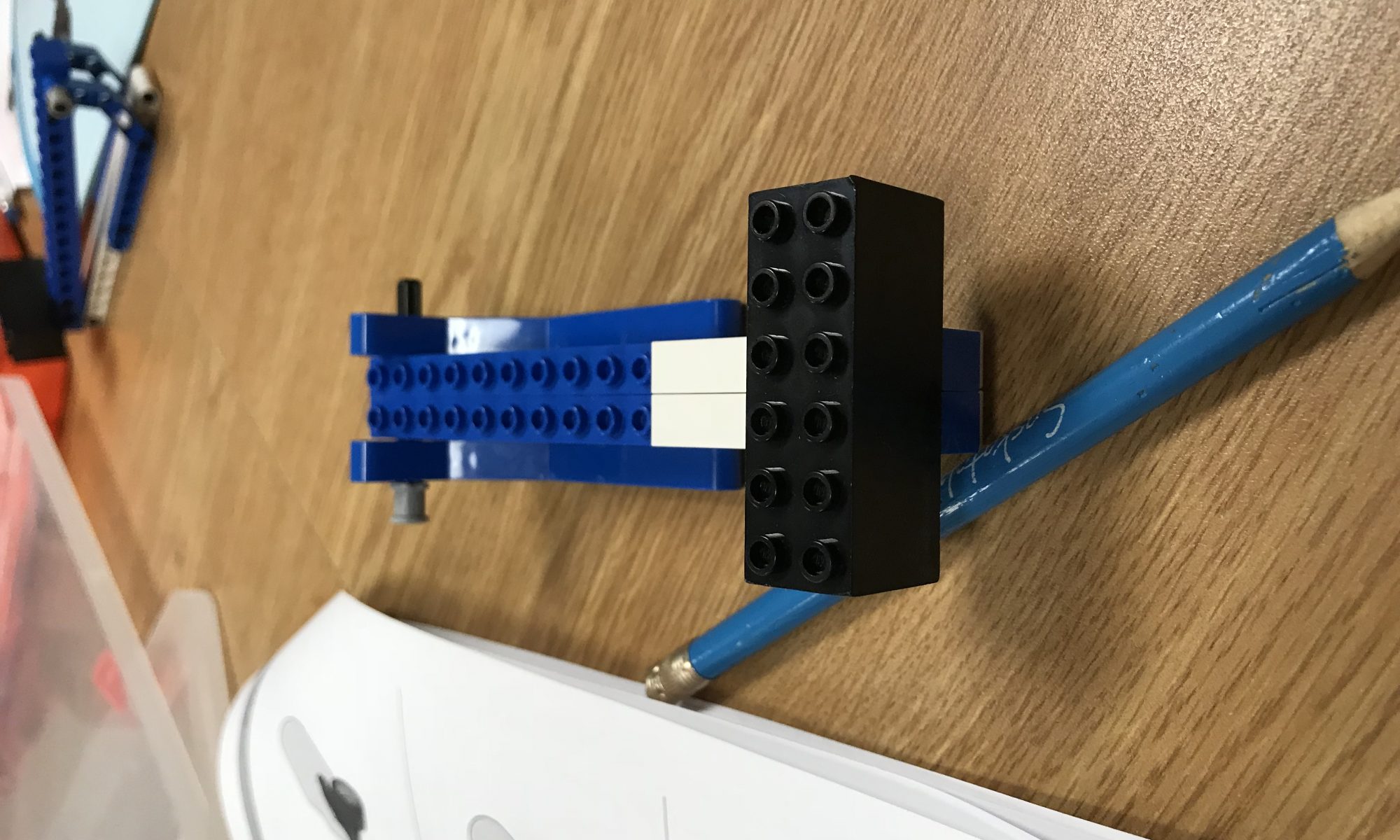Today we built a worm gear as well as screws and the students were allowed to reverse engineer a demonstration model I had built. We learned how the worm gear worked including it’s ability to be driven in only one configuration. The students loved making the model and quite a few students showed great ability to reverse engineer the model. The topic for next week will be a difficult build, the Walker, and since there wasn’t any pieces left on the ground today the students will get chocolate next week.
ECA Phase 3 Topic 5: Pneumatics Basics
Today we built a demonstration model for the kids to get comfortable working on pneumatics and familiar with the pneumatic systems that we will be using in the coming classes. We did not manage to cover many STEM topics today, instead we covered safety with pneumatic devices and their operation. The students had fun but a few found it difficult to actually put the air hoses on the connector, this is not too large of a problem as many of them simply lack the finger strength that adults have. The topic next week is the Scissor Lift which will use a pneumatic cylinder to raise a platform. The students did a good job of cleaning up today however I would like the older kids to help the younger kids out just a bit more.
PBP Phase 2 Combined: Class 5: Simple Machines Part 1
Today we built a few demonstration models on simple machines. the students all appeared to have fun. We learned about the different classes of levers as well as steering mechanisms for wheels. Ray and Selina both reverse engineered a differential today from a model that I built, a task normally reserved for students in later Phases.
Next week we will be learning about a few more simple machines in preparation for the big build in two weeks. I decided to move the walker build behind the Simple Machines builds as the walker is a very complex models that requires a good understanding of simple machines.
Please ask the students to do some basic research into Simple Machines such as the Wedge, Pulley, Gear, and Inclined Plane.
Communication ECA Phase II Class 4: Mechanism Principal Model 20180131
The class of today is the mechanism principal model, in which we covered several most important mechanical mechanisms in human’s history. In order to deliver the concept more intuitively, we first built the simple models and then we explain the knowledge behind all these models. We built three different kinds of levers, two wheel and axle models, three pulley models and one screw model. All models are simple but enough to explain the basic mechanical design rules behind them. The student got bored pretty quickly, but they finished all model building and more importantly, they learned some important concept.
PBP Phase 2: Class 4: Simple Machines
Today we talked about simple machines, where they are found and the different types of machines. While some students didn’t enjoy the less hands on lesson they did enjoy the demonstration of the Class 2 Lever. Yuan in particular seems to have a very good grasp on mechanical principles thus far. Next week we will be talking about combinations of simple machines so please make sure they review the three types of levers, the screw, ramp, and the wedge.
Communication ECA Phase II Class 2: Principal Models 20171011
The kids continued their work on the principal models from last week. Each of the models in their assignment thought them a new scientific concept which they learned through experimentation. Some of the kids used their creativity and tried new ways to build their projects, which was very fun for them. Next week we will move on to new models, either Power Machine or The Walker, which will be both exciting and educational for them.
Communication ECA Phase II Class 4: Principal Model 20171004
In the last class we started working on the Principal Models. They are a collection of projects that help the children learn about introductory physics, and a great exercise for learning about the concepts of motion, force, friction, weight, potential energy, etc. Each task is divided into small parts, so they are easily grasped by the kids. To make the class more than a science course, and to make it engaging and enjoyable, the kids took their time to play with their legos and compare them with each other. Next week we will continue to work on the Principal Models.









